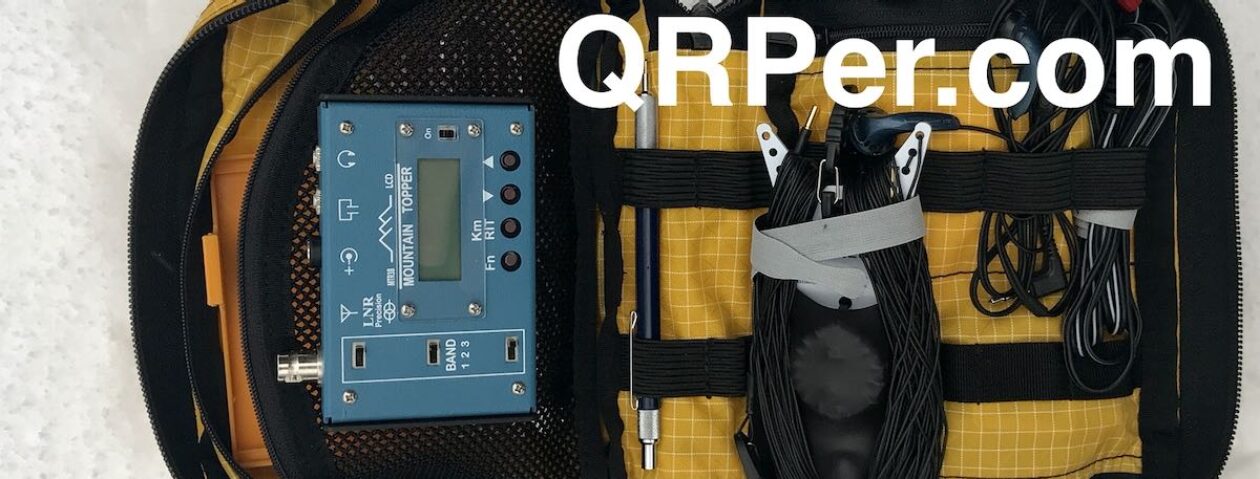On Tuesday, May 6, 2025, I made a little time in my afternoon schedule to take my Venus SW-3B on a final POTA activation.
I might have mentioned in previous posts (and certainly on the Ham Radio Workbench) that starting in April, I’ve been trying to downsize the shack a bit. This is a process I go through at least annually. My shack/office is very small, so things pile up quickly—and I like to divest myself of gear as best I can.
During this process, one of my readers here on QRPer reached out and asked—on a whim—if I’d consider selling him my Venus SW-3B. I gave it some thought and decided to do so.
I love the SW-3B, but the truth is, I hadn’t used it in a long while. It’s been tucked away in my headrest kit for more than a year, and I just haven’t been reaching for it. That and, frankly, I’ve a couple of MTR-3B LCDs, an MTR-4B, and an MTR-3B Currahee model–I’m flush with super compact transceivers.
I agreed to sell him the SW-3B but told him I wanted to take it out on one final activation—and that’s exactly what I did!
Blue Ridge Parkway (US-3378)
 I had to fit this activation into a one-hour window while my daughter was in a class. Fortunately, the class was no more than a mile from the Blue Ridge Parkway. Unfortunately, if I wanted a site with a picnic table for easy operation and setup, I wasn’t terribly close to one.
I had to fit this activation into a one-hour window while my daughter was in a class. Fortunately, the class was no more than a mile from the Blue Ridge Parkway. Unfortunately, if I wanted a site with a picnic table for easy operation and setup, I wasn’t terribly close to one.
Luckily, I had my complete SOTA kit packed, including my Helinox chair and Tufteln knee board. With those two items—paired with the SW-3B—I could operate comfortably just about anywhere.
 I picked a spot on the side of the road, very close to the parkway entrance from US-25. I knew the drive back to her class would take no more than three minutes.
I picked a spot on the side of the road, very close to the parkway entrance from US-25. I knew the drive back to her class would take no more than three minutes.
 I paired the SW-3B with my KM4CFT 30-meter end-fed half-wave, which includes a 40-meter linked extension. I figured with this antenna, I could operate on 40, 30, and 20 meters (by removing the link if necessary).
I paired the SW-3B with my KM4CFT 30-meter end-fed half-wave, which includes a 40-meter linked extension. I figured with this antenna, I could operate on 40, 30, and 20 meters (by removing the link if necessary).
Lately, propagation has been flaky, so having a bit of frequency agility is key to a successful activation!
Gear:

 Note: All Amazon, CW Morse, ABR, Chelegance, Spooltenna, eBay, and Radioddity links are affiliate links that support QRPer.com at no cost to you.
Note: All Amazon, CW Morse, ABR, Chelegance, Spooltenna, eBay, and Radioddity links are affiliate links that support QRPer.com at no cost to you.
Radio:
Battery:
Key & Cable:
- CW Morse “Pocket Paddle”
- Key cable: Cable Matters 2-Pack Gold-Plated Retractable Aux Cable – 2.5 Feet
Other Accessories:
- Tom Bihn Handy Little Thing (HLT) Size 2
- GoRuck GR1 USA
- HEROCLIP Carabiner Clip (attached to my backpack)
- Helinox Chair Zero
- Tufteln N0RNM Folding Knee Board
- Rite In The Rain Top Spiral Notebook
- uni Core Keeps Sharp Mechanical Pencil
Camera & Audio Gear:
- DJI OSMO 4 action camera with Joby Telepod Sport Tripod
- Sony ICD-FX312 Digital Recorder
On The Air
 I hopped on the air and started on 20 meters by calling CQ POTA.
I hopped on the air and started on 20 meters by calling CQ POTA.
 Fortunately, 20 meters seemed to be in decent shape. Continue reading Parting Waves: My Last Activation with the Venus SW-3B
Fortunately, 20 meters seemed to be in decent shape. Continue reading Parting Waves: My Last Activation with the Venus SW-3B













































































